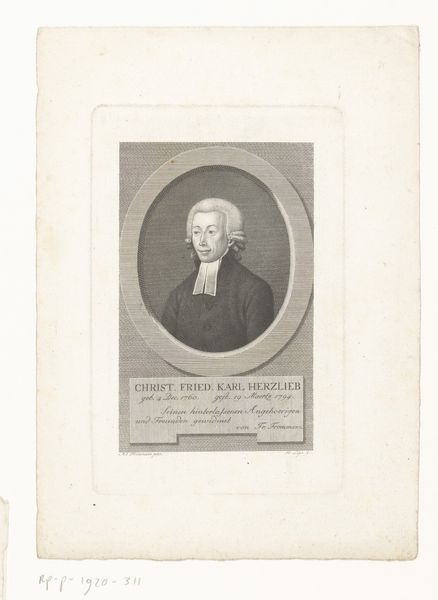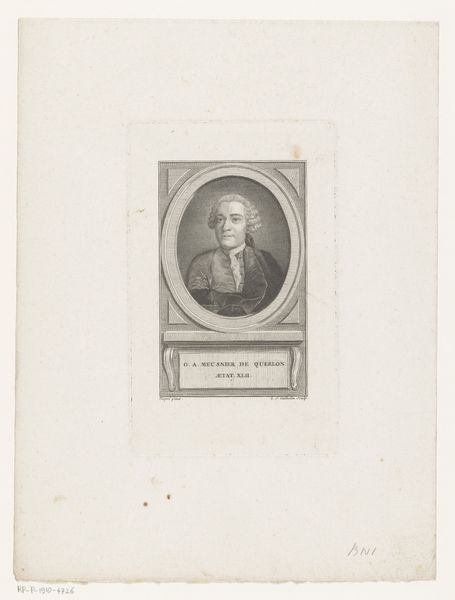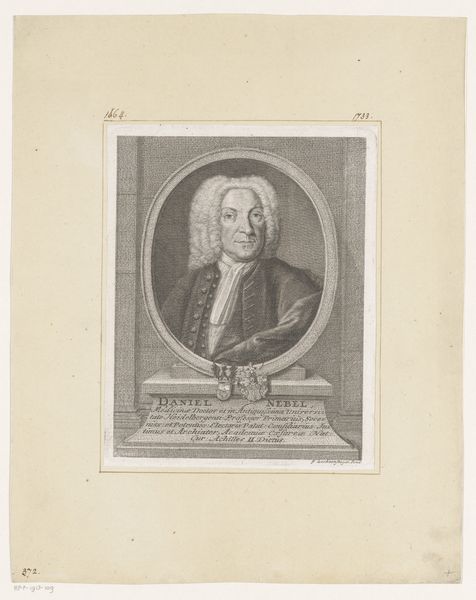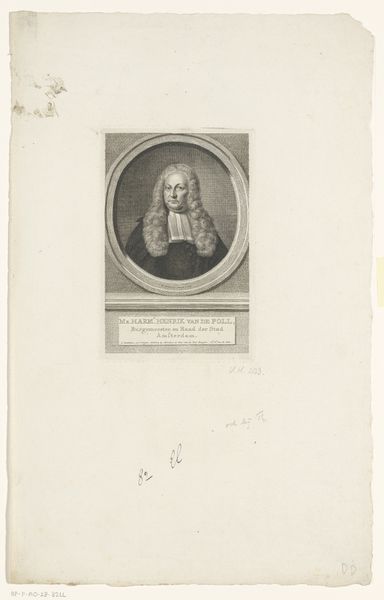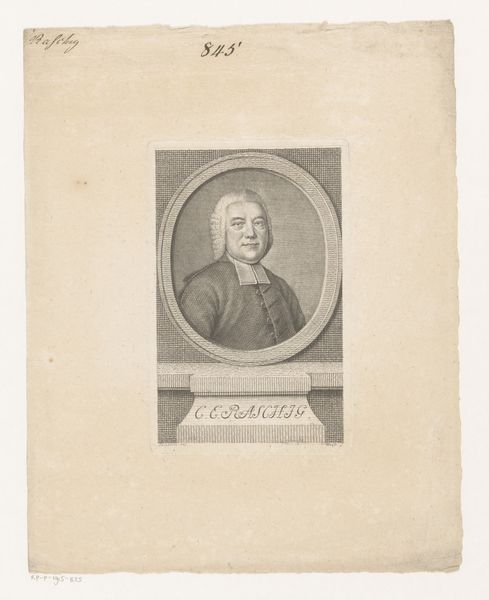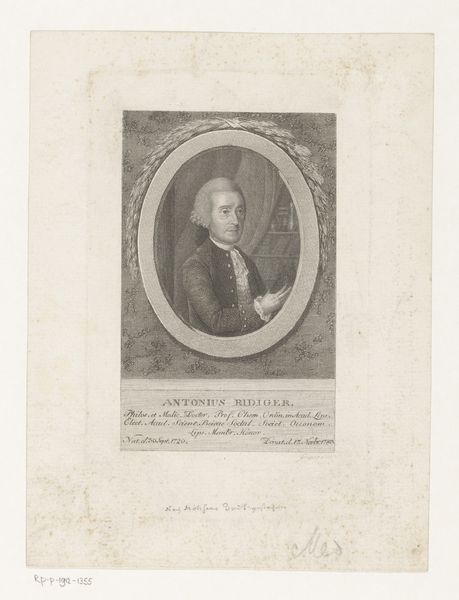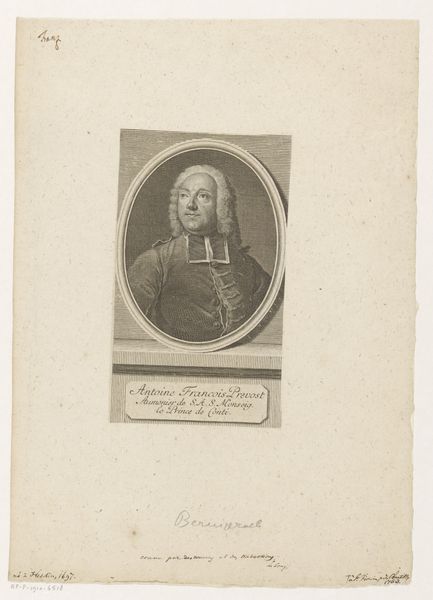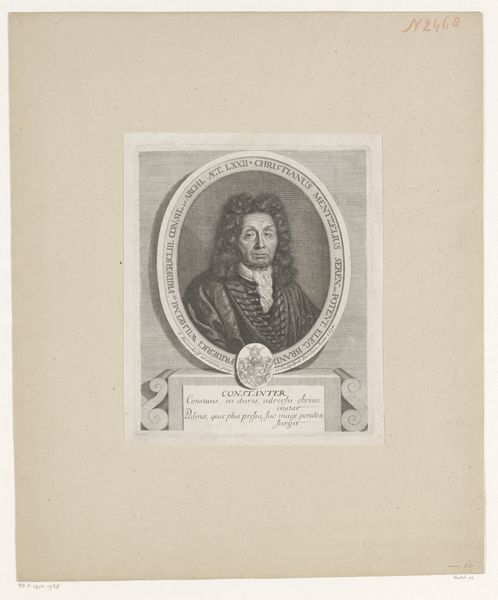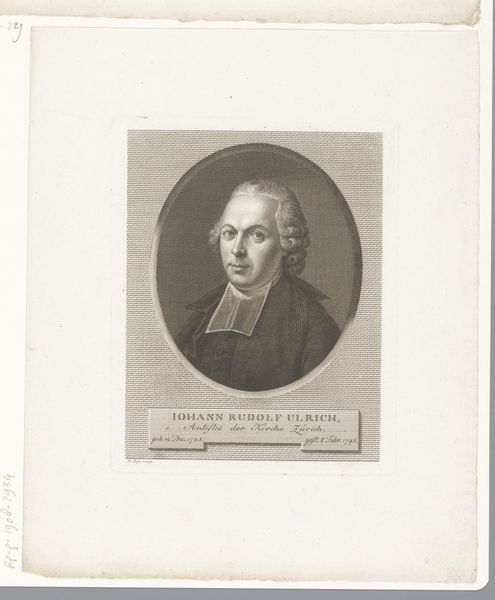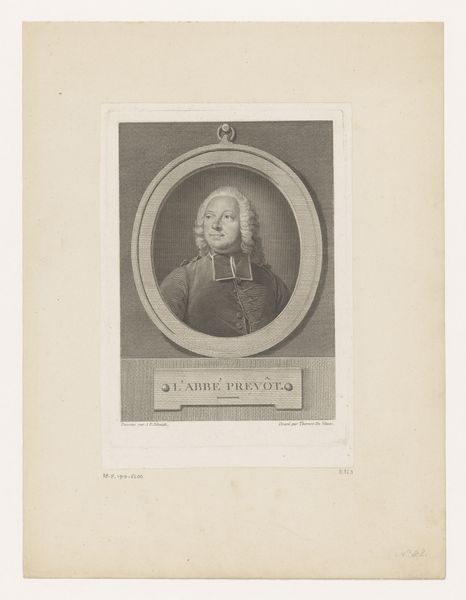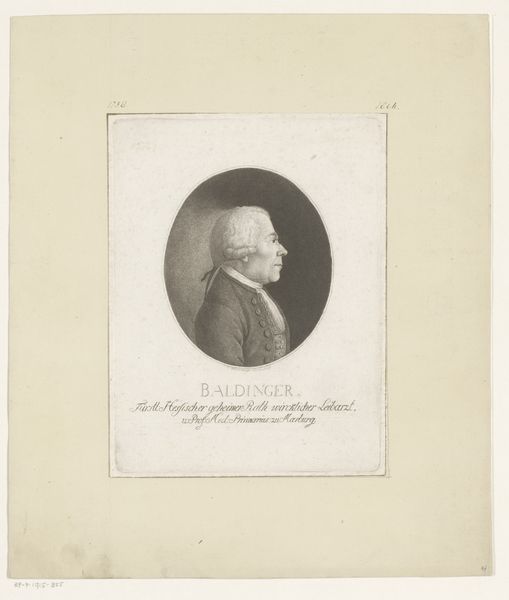
print, paper, engraving
#
portrait
#
baroque
# print
#
old engraving style
#
paper
#
engraving
Dimensions: height 145 mm, width 90 mm
Copyright: Rijks Museum: Open Domain
Around the mid-18th century, Johann Martin Bernigeroth created this portrait of Jean-Théophile Desaguliers using engraving techniques. Engraving is an intaglio process, meaning the image is incised into a metal plate, likely copper here, using a tool called a burin. The artist would have laboriously cut lines into the plate, with the depth and density determining the tonal range of the final print. Ink is then applied to the plate, forced into the incised lines, and the surface wiped clean. Finally, the image is transferred to paper under high pressure in a printing press. Look closely, and you'll notice the incredible level of detail achieved through the precise control of the burin. Bernigeroth captured the likeness and social standing of Desaguliers through this demanding, highly skilled process. The proliferation of printed images like this one was tied to wider social issues of labor, politics, and consumption as the print industry grew in the 18th century. Paying attention to materials, making, and context allows us to understand the full meaning of this artwork, challenging traditional distinctions between fine art and craft.
Comments
No comments
Be the first to comment and join the conversation on the ultimate creative platform.
